Assessment, Evaluation, & Reporting in Ontario Schools
저자: scott young

1. 7 fundamental principles
1.1. Fair, transparent, and equitable
1.2. Support all students
1.2.1. Include: special education needs, language learning; First Nation, Métis, or Inuit
1.3. Relate to curriculum expectations and learning goals
1.3.1. Match: interests, learning styles preferences, and needs
1.4. Clearly understandable by students and parents - throughout the school year or course
1.5. Administered to provide a variety of opportunities for students to demonstrate the range of their learning
1.6. Clear, specific, meaningful feedback and timely to support improved learning and achievement
1.7. Develops student self-assessment skills to enable autonomous learning; where students can set specific goals, and plan their learning
2. Primary purpose: to improve student learning
3. Success dependent on
3.1. Creative differentiation of fair instruction
3.2. Assessment meeting the needs of all students
3.3. Effective leadership from school systems to coordinate and support the work of teachers
4. Source: "GROWING SUCCESS assessment, evaluation, and reporting in Ontario schools" First Edition, covering grades 1-12 (2010) - Ontario Ministry of Education
5. Inclusive education & societies
5.1. High-quality education enhances inclusive societies
6. Guiding philosophy
6.1. "All students can demonstrate their learning regardless of their socio-economic status, ethnicity, gender, geographic location, learning style, and/or need for special services"
7. PHILOSOPHY
8. Ontario Curriculum Policy: Grades 1 to 12
8.1. Assessments and evaluations are based on content and performance standards
9. Assessment Framework: 3 key processes
9.1. Establish where the learners are going in their learning
9.2. Establish where they are in their learning
9.3. Establish what needs to be done in their learning
10. Essential steps in assessment for and as learning, teachers need to:
10.1. Plan assessments to be integrated within instruction
10.2. Start by conveying learning goals and success criteria with students to ensure understanding of success criteria
10.3. Collect data about student learning continuously during instruction, using a variety of strategies and tools
10.4. Use assessment to inform instruction, guide next steps, and help students monitor their progress towards achieving their learning goals
10.5. Analyze and interpret evidence of learning
10.6. Assist students to develop skills of peer and self-assessment
11. ACHIEVEMENT CHART: grade 9 to grade 12 categories
11.1. 50–59% (Level 1)
11.2. 60–69% (Level 2)
11.3. 70–79% (Level 3)
11.4. 80–100% (Level 4)
12. Knowledge and skills categories:
12.1. Evaluating Knowledge and Understanding by: grade/course/specific (knowledge), comprehension (understanding)
12.2. 1. Thinking: critical creative thinking skills and/or processes
12.3. 2. Communication: conveying meaning through various forms
12.4. 3. Application: skillfully using knowledge to make connections of various contexts
13. The achievement chart:
13.1. Provides the framework for curriculum expectations (all subjects/grades)
13.2. Guides high-quality assessment tasks and tools (including rubrics)
13.3. Assists in planning instruction for learning
13.4. Is the basis for consistent and meaningful feedback
13.5. Establishes categories and criteria to assess and evaluate learning
14. 5 strategies that teachers and students use collaboratively to support student learning:
14.1. Use specific and timely descriptive feedback
14.2. Identify and clarify learning goals and success criteria
14.3. Use effective classroom discussions and other learning tasks that elicit information about student learning
14.4. Provide feedback that helps learners move forward
14.5. Use targeted instruction and guidance, to engage students
14.6. Help students to understand what it means to “own” their own learning, and empower them to do so
15. Examples: Potential Assessment Accommodation Requirements
15.1. Extended time limits
15.2. Verbatim scribing
15.3. Oral responses
15.4. Alternative settings
15.5. More frequent brakes
15.6. Assistive technology
15.7. Large font size
15.8. Colour cues
15.9. Task reduction
16. Formative Assessment "for" learning
16.1. Occurs during a learning activity
16.2. Monitors student learning
16.3. Provides students with feedback
16.4. Occurs several times during a course unit
16.5. Usually provides students with a wide range of question formats
16.6. Purpose: to improve learning and achievement
17. Summative Assessment "of" learning
17.1. Occurs at the end of a learning activity
17.2. Evaluates student learning
17.3. Scores results
17.4. Occurs a few times during the course or academic year
17.5. Usually constrained to a limited selection of question formats
17.6. Purpose: to measure or audit learning attainment
18. Examples: Diagnostic & Formative Assessments - "for" & "as" learning
18.1. Class discussions
18.2. Checklists
18.3. Questionannaires
18.4. Journals/Progress notes
18.5. Peer/Self-evaluations
18.6. Observations
18.7. Interviews
19. Examples: Summative Assessment "of" learning
19.1. Written tests
19.2. Creative assignments
19.3. Presentations
19.4. Portfolios
19.5. Written reports
19.6. Projects/products
19.7. Examinations
19.8. Peer/Self-evaluation
20. Diagnostic Assessment "for" learning
20.1. Occurs before instruction begins so teachers can determine students' readiness to learn new knowledge and skills
20.2. Teachers obtain information about students interests and learning preferences
20.3. Used to determine what students already know to help teachers plan instruction and assessment in a differentiated and personalized way
20.4. Purpose: to understand if planned learning goals are appropriate
21. Formative Assessment "as" learning
21.1. Students foster their own capacity to assess themselves - providing and receiving feedback to and from other students
21.2. Occurs frequently with support and guidance from the teacher
21.3. Purpose: develops autonomy and independence in learning
22. Choose Appropriate Assessment Tools to Match Strategy
23. STRATEGY
24. TOOLS
25. EXAMPLES


